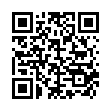|
This article is cited in 6 scientific papers (total in 6 papers)
Mathematical Modeling, Numerical Methods
Properties investigation of self-dual combinational devices with calculation control based on Hamming codes
D. Efanovab, T. Pogodinaa
a Russian University of Transport
b Peter the Great St. Petersburg Polytechnic University
Abstract:
A new approach to the synthesis of self-checking devices is considered, based on the control of calculations in testing objects using Hamming codes, the check bits of which are described by self-dual functions. In this case, the structure operates in a pulsed mode, which is actually based on the introduction of temporal redundancy when building a self-checking device. This, unfortunately, leads to some decrease in performance, however, it significantly improves the characteristics of controllability, which is especially important for devices and systems of critical use, the input data for which does not change so often. A brief review of methods for constructing built-in control circuits based on the self-duality property of calculated functions is given. The basic structures of the organization of built-in control circuits are given. The proposed ways of developing the theory of synthesis of built-in control circuits are based on checking whether or not the calculated functions belong to a class of self-dual Boolean functions. All possible values of the number of data bits for Hamming codes have been established. They will have the property of the self-duality of functions describing control bits. En-coders of such Hamming codes will be self-dual devices. Since the functions of the check bits of Hamming codes are linear, in order for them to be self-dual, it is necessary that an odd number of arguments be used in each of them. It is proved that the number of bits of code words of Hamming codes with self-dual check functions is equal to $n=3+4l$, $l\in N_0$. The results of the simulations self-dual devices with built-in control circuits along two diagnostic parameters in the Multisim environment are presented. A method is proposed for modification of the structure of calculation control along two diagnostic parameters, which allows to use any linear block code (not necessarily Hamming code). It is based on retrofitting the encoder with a device for converting functions into self-dual ones. In fact, this is a code modification device. It is proved that to obtain a modified Hamming code with self-dual control functions for $n\ne3+4l$, $l\in N_0$; cases, it is enough to add modulo $M=2$ the non-self-dual control function with the function of the high data bit.
Keywords:
self-checking combinational device, integrated control circuit, checking of calculations at the outputs of combinational devices, linear block code, checking of calculations by two diagnostic parameters, control of self-duality, checking of calculations by Hamming codes.
Received: 29.08.2022
Citation:
D. Efanov, T. Pogodina, “Properties investigation of self-dual combinational devices with calculation control based on Hamming codes”, Informatics and Automation, 22:2 (2023), 349–392
Linking options:
https://www.mathnet.ru/eng/trspy1241 https://www.mathnet.ru/eng/trspy/v22/i2/p349
|

| Statistics & downloads: |
| Abstract page: | 57 | | Full-text PDF : | 44 |
|




 Contact us:
Contact us: Terms of Use
Terms of Use
 Registration to the website
Registration to the website Logotypes
Logotypes








 Citation in format
Citation in format 
